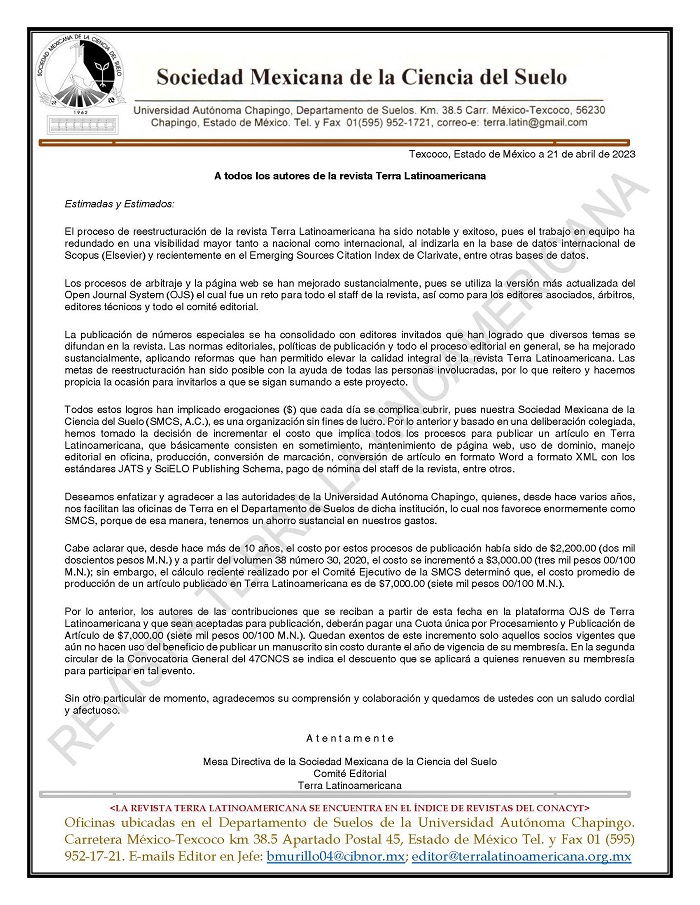Growth and Accumulated Biomass in Coastal Dune Stabilizing Plants Biofertilized with Fosfonat®
DOI:
https://doi.org/10.28940/terralatinoamericana.v43i.2041Keywords:
consortium, inoculum, restoration, revegetationAbstract
Coastal dunes are dynamic ecosystems and vulnerable to erosion and invasion of species. For their conservation, it is necessary to implement strategies to recover native vegetation and rehabilitate the functioning of degraded areas. The growth and accumulation of biomass in Scaevola plumieri and Sophora tomentosa species native to the coastal dune were evaluated. An experiment was established in a forest nursery with two treatments (Consortium, beneficial microorganisms Fosfonat® and Control). For 90 days, every 15 days (six measurements), stem length, number of leaves, and at the end of the experiment, above-ground and underground biomass
were measured and compared between treatments. The number of leaves was dif ferent between treatments af ter 45 days of seedling emergence. While the stem length of S. plumieri dif fers throughout the experiment and in S. tomentosa it dif fers significantly af ter 45 days of the experiment duration. The biomass accumulated in leaves and roots was higher in the seedlings of both species inoculated with the Consortium. Likewise, in this treatment, dif ferences were found in the length of the roots in both species. The results suggest that the application of beneficial microorganisms in the production of coastal dune stabilizing plants can contribute to improving the success of revegetation and ecological restoration programs in environments with limiting conditions for the establishment of plants such as dune soils coastal.
Downloads
Publication Facts
Reviewer profiles N/A
Author statements
- Academic society
- Terra Latinoamericana
- Publisher
- Mexican Society of Soil Science, C.A.

















